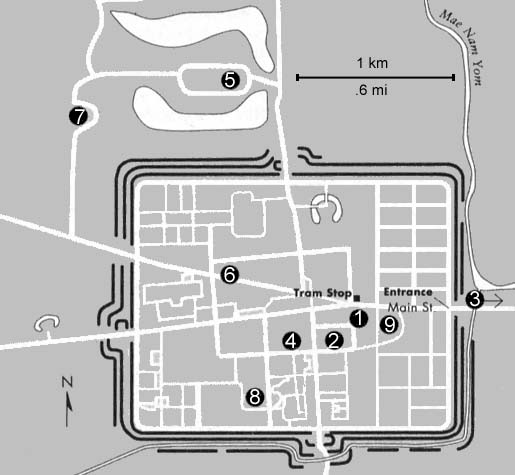
Sukhothai Historical Park (Old Capital)
1. National Museum
2. Royal Palace
3. Wat Chang Lom
4. Wat Mahathat
5. Wat Phra Phai Luang
6. Wat Sra Sri
7. Wat Sri Chum
8. Wat Sri Sawai
9. Wat Traphang Thong Lang

|
Sukhothai Historical Park (Old Capital)1. National Museum
|
Sukhothai, whose name means "Dawn of Happiness," became the first capital of Thailand after 1238, when Sri Indraditya defeated a Khmer garrison there to win independence from the Khmer Empire and create a kingdom of the Thai people (like George Washington, in the United States.) He was succeeded by two sons, first Ban Muang (d. 1278 or 1279) and then Ramkhamhaeng (d. 1299 or 1318), a great king who established the Thai alphabet and expanded the Thai kingdom to roughly its present borders. The fourth king of Thailand was Lo Thai (d. 1346 or 1347), who built up Wat Mahathat into its present form, constructing its "lotus-bud chedi" in 1345. By 1376, Ayutthaya (founded 1350) had become the real capital of Thailand. Sukhothai hung on with local rulers until 1438, but was gradually abandoned to the jungle. In 1978, a massive restoration project created the present historical park within the boundaries of the old capital. The old city was a cultural and artistic as well as a political capital; the Sukhothai "boneless" style of statue-making is one of the major art styles of SE Asia. Sukhothai Historical Park is now a UNESCO World Heritage site. It contains almost 200 extant monuments, in various stages of preservation.
I thank Peter Cziffra for generously supplying the photographs of Sukhothai that appear on the following pages.

|